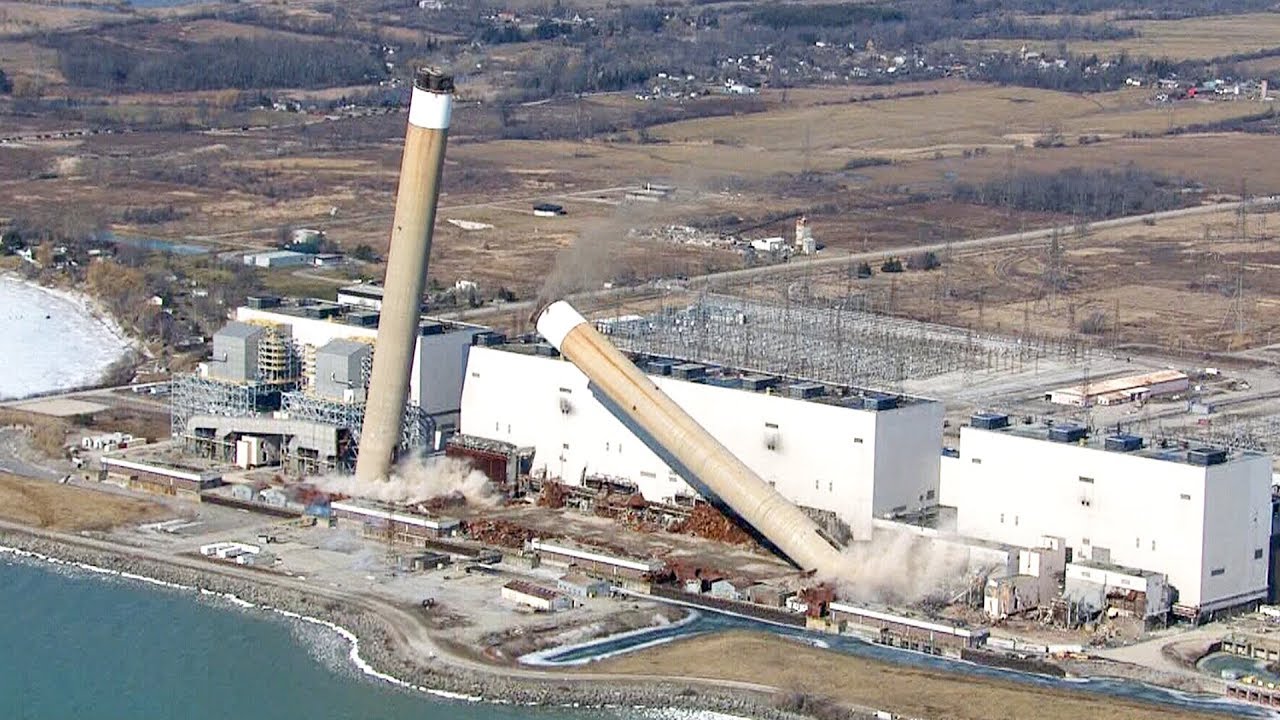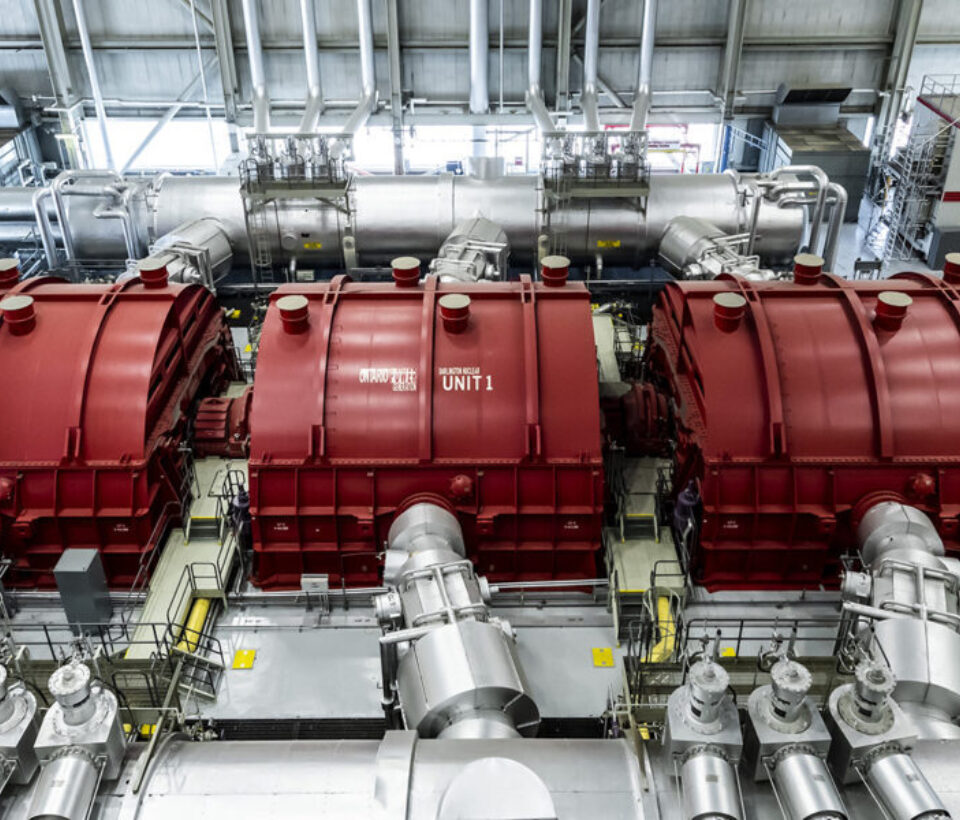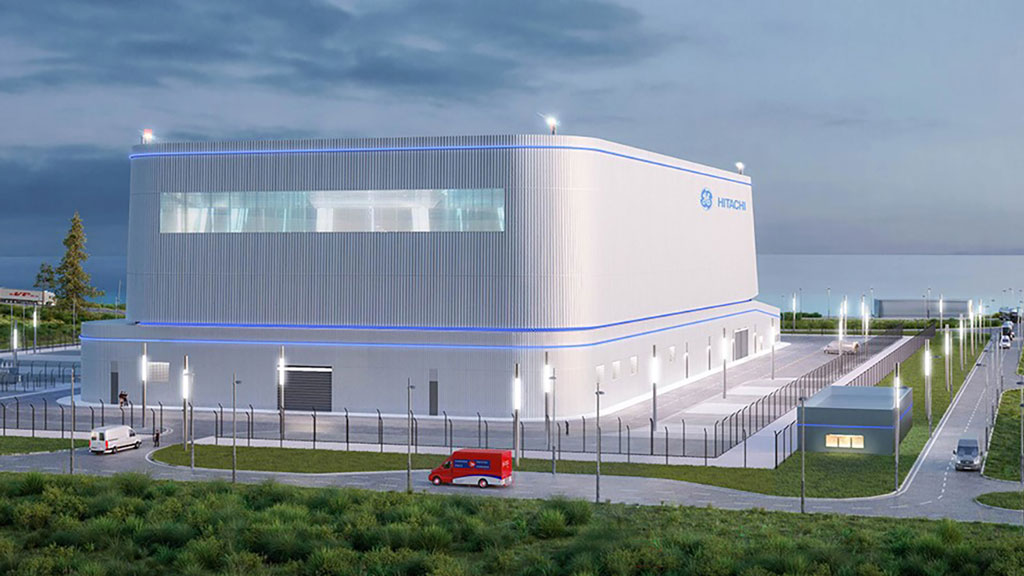Nuclear is the future in Ontario as OPG celebrates ten years without coal plants
Published April 9, 2024 at 6:15 pm

Ten years without coal has been a boon to turning Ontario’s grid into one of the cleanest in the world, with nuclear power the key to the transformation.
Ontario Power Generation is celebrating a decade since the last of the coal-fired plants in the province were mothballed, making Ontario the first jurisdiction in North America to go coal free.
Nanticoke, on the Lake Erie shore in 2013 and the Thunder Bay Generating Station in April 2014 were the last coal plants to close, with Nanticoke re-born as a solar station in 2019.
The end of the line for coal was ten years in the making, with the process beginning in 2003 when coal represented bout a quarter of Ontario’s electricity supply.
“Phasing out coal from our fleet was a complex and difficult task to accomplish,” noted OPG CEO Ken Hartwick. “But nothing worth doing is easy, and this was no exception. Ultimately, it was a necessary and important step to building a cleaner electricity system for all Ontarians.
The decision had an immediate positive impact, reducing provincial greenhouse gas emissions by about 17 per cent – the equivalent of taking seven million cars off the road.
Getting rid of coal would not have been possible without nuclear, which Hartwick called the “workhorse” of the province’s energy sector. Both nuclear and hydro-electric power will “continue to play an important role” in decarbonizing the broader economy through electrification, he added.
Today, nearly 95 per cent of the electricity generated in Ontario was emissions-free, with nuclear energy providing approximately 61 per cent of the province’s energy needs and hydroelectric stations providing another 25 per cent.
Non-hydro renewables, such as wind, solar and bioenergy, provided approximately seven per cent of Ontario’s grid-connected electricity generation.
A decade on, OPG continues to lead the way to building a cleaner future.
Advancing new, low-carbon energy technologies, including Small Modular Reactors (now being built at the Darlington Nuclear Generating Station in Clarington), are helping the province reach its net-zero goals, a development not lost on federal innovation and industry minister François-Philippe Champagne, who told the Canadian Press he considers nuclear power part of the renewable energy portfolio that “needs to grow” to support the country’s lean into “the economy of the 21st century.”
“Nuclear, definitely,” Champagne said last week, adding that the SMRs, as well as hydro, wind and solar are energy sources with bright futures in Canada.
That was music to the ears of Chris Keefer, a long-time nuclear power advocate who is also the President of Canadians for Nuclear Energy. “It was wonderful to see (his) strong statement of support for the growing role of nuclear in Canada’s future energy portfolio.”

Darlington Nuclear in Clarington
Since coal closure, OPG has marked several other clean energy milestones:
- In 2016, the Darlington Nuclear Refurbishment project got underway, which remains on track to be completed by 2026 and will provide 30-plus more years of clean, reliable power.
- In 2017, the Peter Sutherland Sr. Hydroelectric station in northeast Ontario, in partnership with the Taykwa Tagamou Nation, was put into service.
- In 2023, work on North America’s first fleet of low-carbon SMRs began at the Darlington Nuclear site.
- Also in 2023, Ontario gave the go-ahead to start the initial planning for the Pickering Nuclear refurbishment.
The elimination of coal stands as the single largest greenhouse gas emissions reduction action on the continent and was primarily responsible for Ontario achieving its 2014 emissions reduction target of six per cent below 1990 levels.
“Ontarians can be proud that we have some of the cleanest and most reliable power in the world,” said Hartwick. We’re just getting started as we work to electrify life in one generation.”

Rendering of the future small modular reactor plant at Darlington Nuclear






